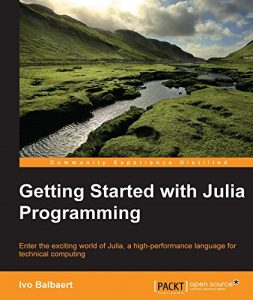About This Book
- Work with Julia in a multi-core, distributed, and networked environment
- Learn the techniques to create blazingly fast programs with Julia
- The book walks you through various practical examples to get to grips with Julia
Who This Book Is For
This book is for you if you are a data scientist or working on any technical or scientific computation projects. The book assumes you have a basic working knowledge of high-level dynamic languages such as MATLAB, R, Python, or Ruby.
What You Will Learn
- Set up your Julia environment to achieve the highest productivity
- Solve your tasks in a high-level dynamic language and use types for your data only when needed
- Create your own types to extend the built-in type system
- Visualize your data in IJulia with plotting packages
- Explore the use of built-in macros for testing, debugging, benchmarking, and more
- Apply Julia to tackle problems concurrently and in a distributed environment
- Integrate with other languages such as C, Python, and MATLAB
In Detail
Julia is a new open source programming language that is used in the field of data science computing. It was created to solve the dilemma between high-level slow code and fast but low-level code, and the necessity to use both to achieve high performance. This book will give you a head start to tackle your numerical and data problems with Julia. Your journey will begin by learning how to set up a running Julia platform before exploring its various built-in types. You will then move on to cover the different functions and constructs in Julia. The book will then walk you through the two important collection types—arrays and matrices. Over the course of the book, you will also be introduced to homoiconicity, the meta-programming concept in Julia.
Towards the concluding part of the book, you will also learn how to run external programs. This book will cover all you need to know about Julia to leverage its high speed and efficiency.






